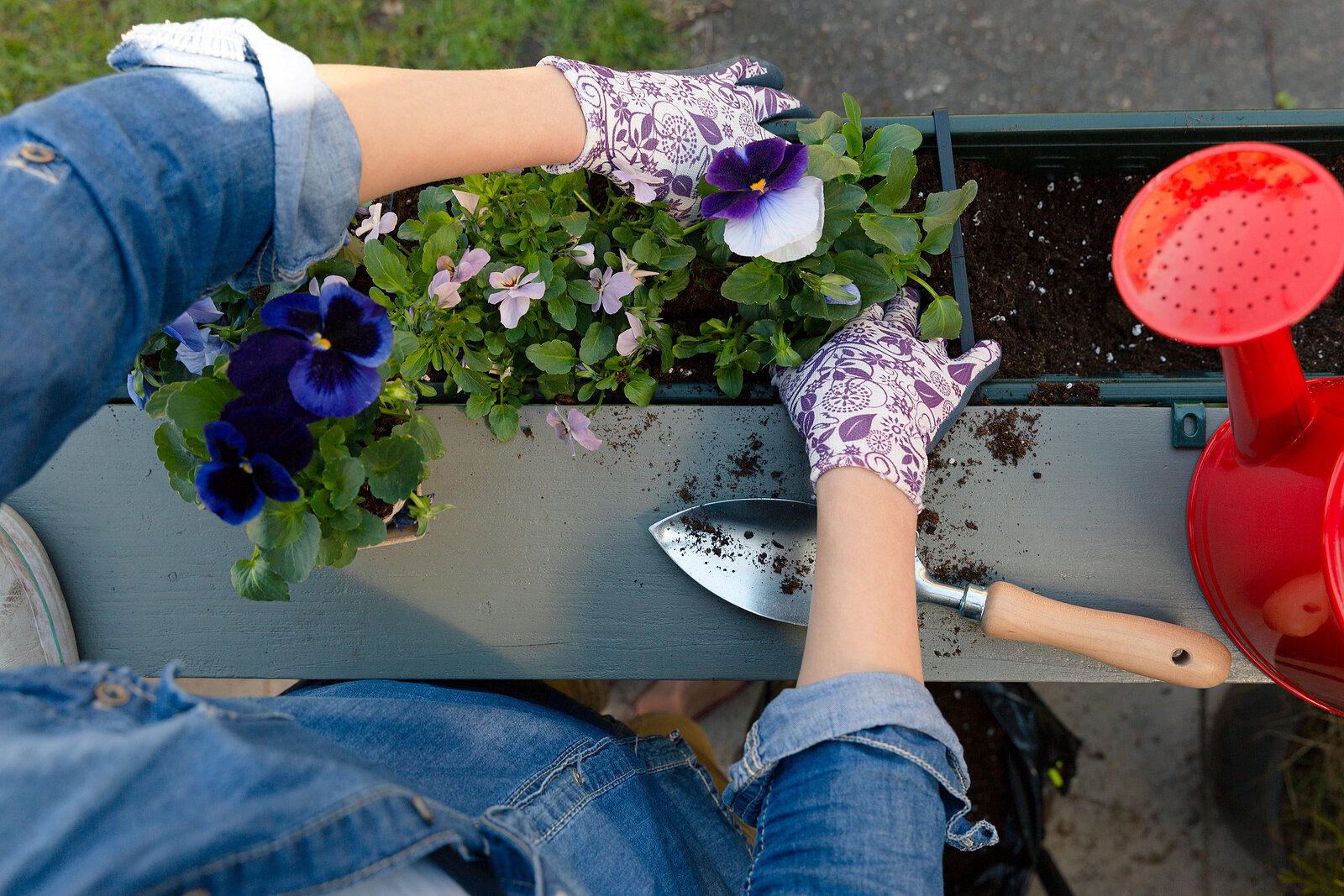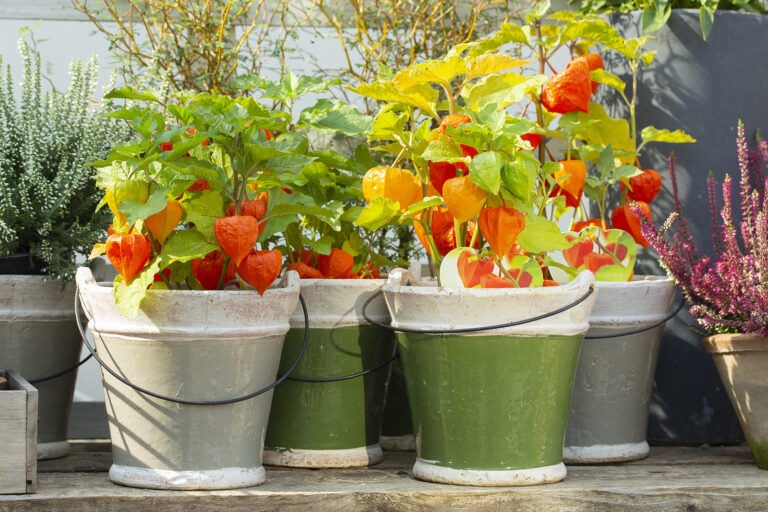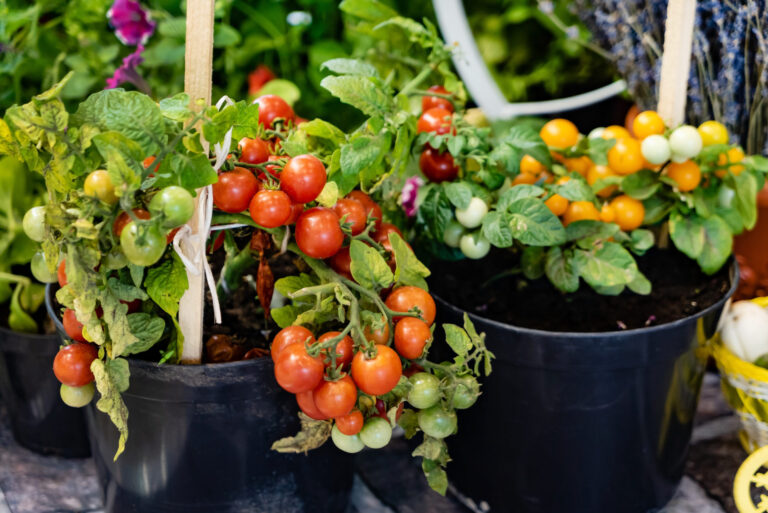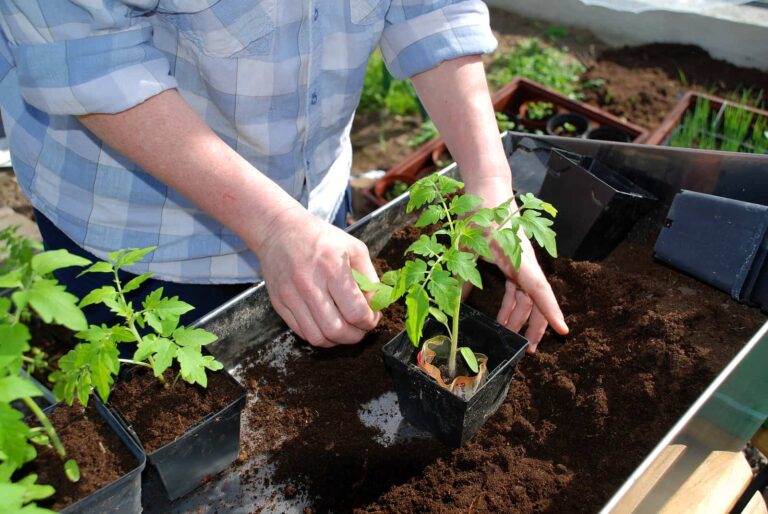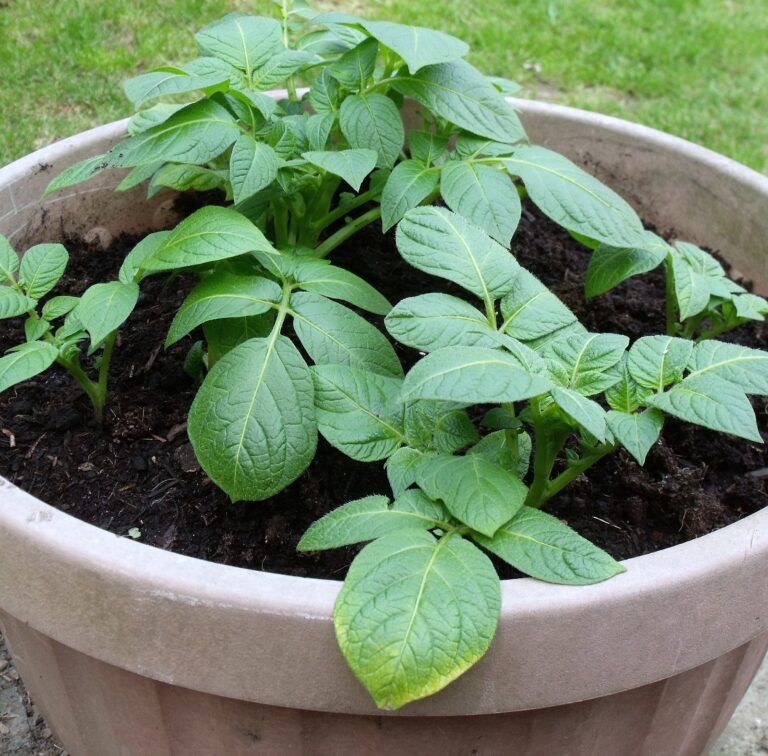Planting a Container
Planting a container is easy if you follow a few simple tips. Once you’ve planted a few containers, the process will become second nature. Here are tips to get you started.
How to plant a container step-by-step
- If you are planting a large container, set it in its permanent location before planting or place it on a plant dolly so that it can be easily moved.
- Make sure the container to be planted is clean. Wash it with warm, soapy water and rinse it thoroughly before planting. If the container has been used before, disinfect it with a solution of ¼ cup chlorine bleach mixed in 1 gallon of water. Let the container dry after cleaning.
- If you are planting in a clay container, soak it in water for 30 minutes before planting, otherwise, the dry clay will wick moisture from the soil.
- Cover the hole or holes at the bottom of the pot with newspaper or light plastic screen; this will prevent soil from washing out of the hole.
- If the pot is large, you can save soil and lighten the pot by inverting a smaller pot at the bottom of the pot.
- Use a high-quality potting soil or planting medium. Do not use regular garden soil; garden soil will be heavy and poorly drained and may lack nutrients. You can prepare your own planting medium; see below.
- Add potting medium to the bottom of the container; add medium to the top of the inverted pot if you used one. Do not over-firm the potting mix at the bottom of the container; it should be aerated.
- Sprinkle slow-release fertilizer into the potting medium. Cover the fertilizer with a bit of medium before setting plants in place. Plant roots should not come in direct contact with the fertilizer. Add polymer crystals at this stage if you want to ensure the soil does not dry out in hot summer regions.
- Work out your planting plan before you actually plant. Keep the plants to be transferred in their nursery pots and arrange them in the larger container. When you are happy with the effect, set the plants to the side on the ground in the same pattern.
- Water all of the plants before adding them to the new container. Ensure the roots are moist.
- Begin planting from the center or middle of the container. Set your central or feature plant first. Plant the remaining plants in order of size.
- Remove each plant from its nursery pot. Slide it carefully from its pot; cradle the stem and root ball in one hand.
- If a plant is rootbound—if the lower roots curl around the bottom of the pot or roots are coming out of the top of the pot—massage the roots gently to separate them. Rootbound plants should be repotted in a pot 1 to 2 inches wider than the original pot. If roots are partially brown and dry, trim those dead roots off.
- Consider which side of your planting design will be viewed. Position each plant for maximum effect.
- If you are adding several small plants, you may want to position these at a slight angle so that the foliage and flowers face out toward the rim of the pot; this will display the plants to the best effect.
- Arrange trailing plants to they face inward covering the potting mix rather than outward; this will make the display look more established. Trailing plants will soon spill over the edge of the container.
- Set each plant in place and firm in the soil around the roots one by one. Fill in potting mix to the sides of the container. Add potting mix as needed to firm in the soil. Leave 1 inch of room at the top of the container for water to pool.
- When all plants are in place, water in the plants making sure the potting mix is moist and settled.
- If the container can be moved, set it in a shady or sheltered place for a couple of days to avoid stressing the plants.
- Keep the plants well-watered for the next 10 days.
Double potting
- Double potting is setting a smaller pot inside a larger pot. When the smaller pot is set inside the larger pot, soil, sphagnum moss, mulch, or compost is added around the smaller pot to fill in space.
- Double potting will insulate the roots in the smaller pot from heat and cold. It will keep the plant cooler and moister. Double potting will increase humidity around the plant.
- Double potting is especially useful when the outer pot is porous clay.
- Double potting is useful if you plan to eventually remove the plant from the larger container and plant it elsewhere.
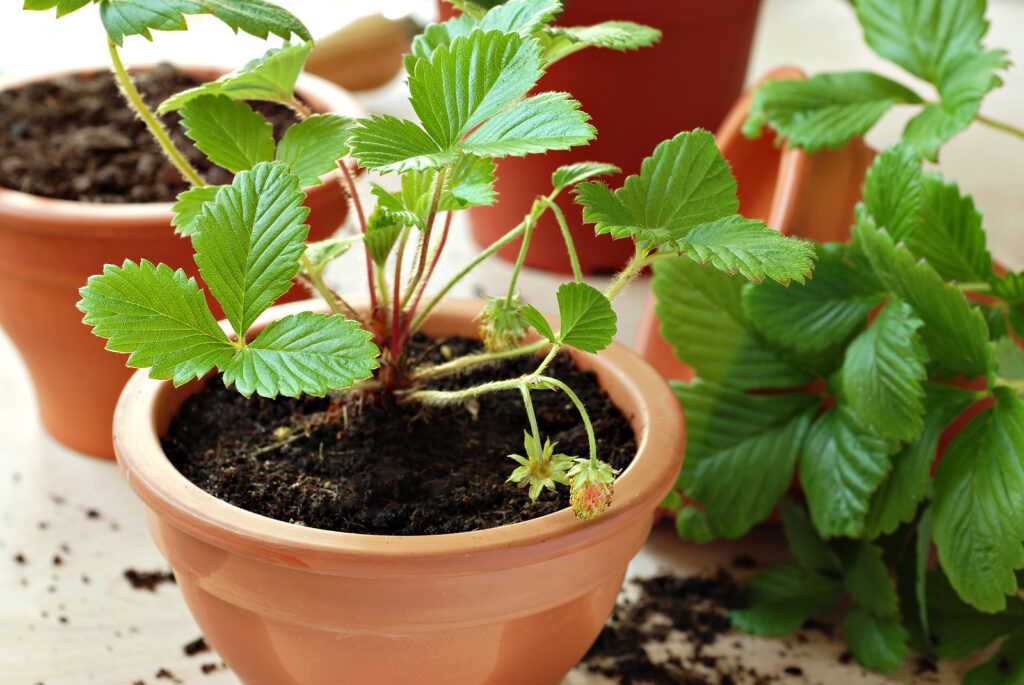
Potting mixes
Commercial potting mixes
Commercial potting mixes usually have no compost or soil in them; they are mostly peat with vermiculite to absorb and hold water and perlite to improve drainage. To improve a soilless potting mix, especially for perennials, shrubs, and trees, add 10 percent sifted compost and 10 percent garden soil or add simply 20 percent sifted compost. The addition of sifted compost will add nutrients to a commercial potting mix.
Blending your own soil mix
You can blend your own potting mix. This will allow you to add different ingredients to match the needs of plants.
A custom mix should include sifted compost to provide the slow release of nutrients. Be sure your mix is not too fine.
Here is a simple container blend:
- 4 parts peat moss
- 1 part sifted compost (or ½ part compost and ½ part garden soil)
- 1 part perlite or vermiculite
To enrich the above mix, add one of two pinches each of bonemeal, greensand, bloodmeal, and kelp meal; these are slow-release organic fertilizers.
How much soil mix is needed
- Some containers are labeled by volume, usually in gallons. If your potting mix is measured in gallons the math is done for you. If the potting mix is measured in cubic feet, divide the number of cubic feet by 7.5 to know the number of gallons of mix you need.
- To find the volume of a square or rectangular pot, multiply the length by width by height. A box 24 inches long, 8 inches wide, and 8 inches deep will hold 1,536 cubic inches of soil. Divide the number of cubic inches by 1,728 to get the number of cubic feet of soil you need. If the potting soil is measured by gallons, multiply the number of gallons by 7.5 to get the number of cubic feet.
- To find the volume of a round pot, measure the diameter of the pot from side to side. Now divide that number by 2 and then multiply it by itself, and then multiply by 3.14. Take that answer and multiply it by the height of the pot to find the number of cubic inches the pot can hold. Divide the number of cubic inches by 1,728 to get the number of cubic feet of potting mix needed. If the potting mix is measured in gallons, multiply the number of gallons by 7.5 to find the number of cubic feet.
Also of interest:

